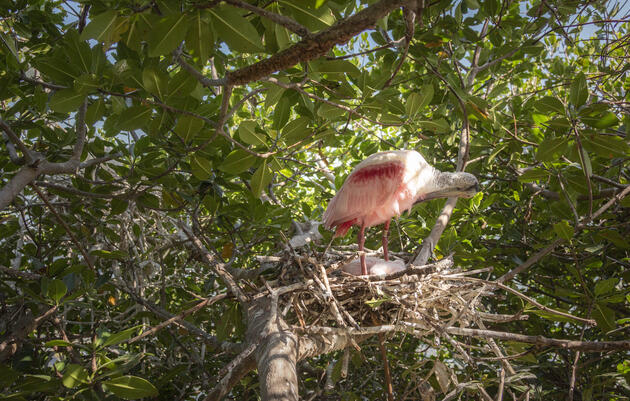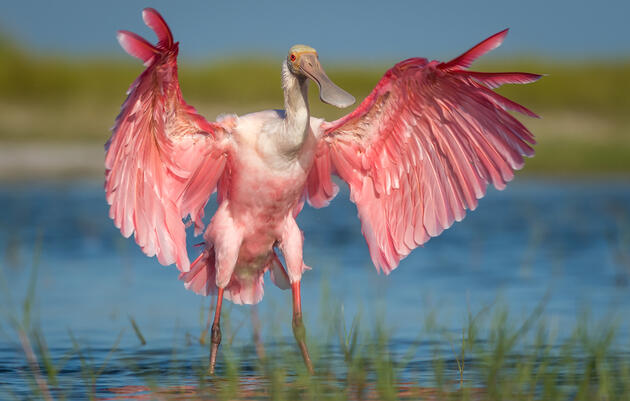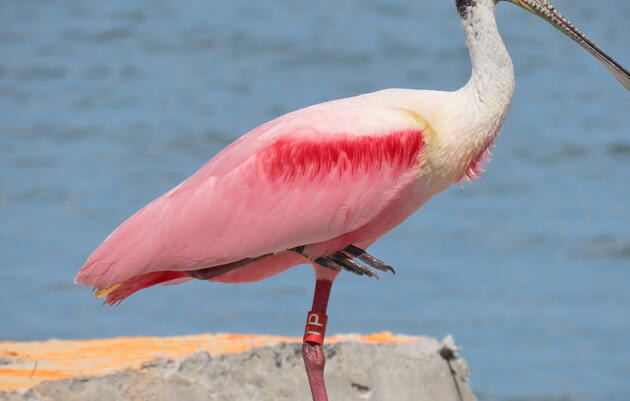TAVERNIER – Audubon’s Everglades Science Center (ESC) has completed a pilot study to determine if the use of camera traps for monitoring the nesting success of Roseate Spoonbills in Florida Bay provide a reliable alternative to traditional survey techniques. The study, which took place from January through April 2021, was completed with funding from South Florida Water Management District in an effort to streamline monitoring efforts used to evaluate Everglades Restoration that may be applied across the monitoring network. On May 12, the District approved Audubon’s request for additional funding to extend the study for an additional three years.
Led by Audubon Florida Director of Research Jerry Lorenz, PhD, the study included the deployment of 13 Browning Spec Ops Edge trail cameras to test the practicality of using motion sensor-triggered photography of spoonbill nests to determine nesting success. Biologists have proposed the use of this technology to either replace or complement traditional mark-revisit surveys, which are costly, time consuming, and can cause unnecessary disturbance to nesting birds.
“The results from the two methods were the same, which tells me we can use cameras in the future to monitor Roseate Spoonbill nesting success,” said Lorenz. “Still, there were a few discrepancies between the two methods, which is why we want to continue the study,” he concluded.
Over the past several decades, Roseate Spoonbill populations in Florida have plummeted. In 1979, scientists recorded 1,250 nesting pairs of spoonbills in Florida Bay – by 1994, they counted only 400 nesting pairs. These numbers have fluctuated considerably, but in 2010, it was clear that Florida Bay was no longer meeting the birds' needs: scientists could find fewer than 100 nesting pairs there. Luckily, their numbers elsewhere have increased somewhat.
According to Lorenz, the results of this pilot study warrant further exploration of the use of cameras to monitor the nesting ecology of birds in the wild. In the case of Roseate Spoonbills in Florida Bay, camera traps can potentially provide an important tool in the assessment of the impacts of restoration activities and the impact of sea level rise on this indicator species. Furthermore, the development of these protocols may be applicable to other wading bird studies on regional or even global scales.
National Audubon Society's first Director of Research, Robert Porter Allen, established Audubon's Everglades Science Center in the Florida Keys in 1939, when he began a full-time study of the Roseate Spoonbill. Since then, this research has demonstrated how spoonbills are sensitive to changes in the quantity and quality of their foraging habitat, and the "pinks" are now an "indicator species" for the Everglades Restoration Plan.
Audubon protects birds and the places they need, today and in the future.







